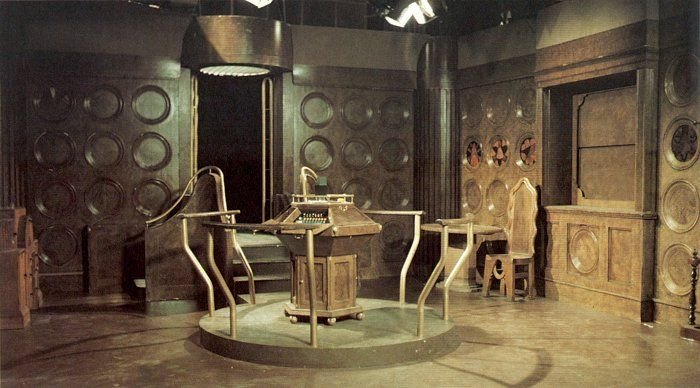Philip Hinchcliffe’s tenure as a producer for Doctor Who marked a significant turning point in the history of the iconic series. His era brought about a radical transformation of the TARDIS, the Time Lord’s iconic blue box. From a simple control room to a vast, ever-evolving space, Hinchcliffe’s innovations continue to resonate with fans today.
A shift in perspective: beyond the control room
Prior to Hinchcliffe’s involvement, the TARDIS was primarily depicted as a functional control room with limited exploration of its interior. However, Hinchcliffe recognized the potential for a richer environment. As he explained, “I wanted to get into my stories a little bit more sort of narrative thrust or narrative impetus.” To achieve this, his era introduced the concept of corridors, boot cupboards, and even a secondary control room – hinting at the vastness beyond the central console. This shift in perspective laid the groundwork for future iterations of the TARDIS to be portrayed as a more complex and multifaceted space.
Beyond the set: the TARDIS as a character
Hinchcliffe acknowledged that the expansion of the TARDIS wasn’t always a pre-planned endeavor. “Story needs dictated the creation of additional space,” he explained. “So, you get a story and it needs a little bit, bit more space because this action has got happened that year.” This “organic” growth, driven by practical considerations, has become an integral part of the show’s charm. Similar to the Doctor’s unexpected regenerations, these changes, initially driven by practicality, have become ingrained in the show’s mythology.
Hinchcliffe’s era contributed to the TARDIS becoming more than just a set. The introduction of the “chameleon circuit malfunction” scene, where the Doctor explains the TARDIS appearing as a police box, cemented the idea of the TARDIS being bigger on the inside. This seemingly simple plot device became a cornerstone of the show’s lore, highlighting the TARDIS’s mysterious properties.
Hinchcliffe himself recognized the significance of this scene: “The TARDIS being two boxes, one very far away being the large box, the one very close to you being a small box… If you could keep them at those distances and fit them together, you could have this idea of how the TARDIS is bigger on the inside and smaller.” This simple explanation, delivered by Louise Jameson’s Leela, became a foundational element of the TARDIS’s mythology.
The TARDIS: a canvas for fan imagination
Hinchcliffe’s era wasn’t afraid to experiment. The wooden TARDIS, a unique design never replicated, stands as a testament to this willingness to explore new ideas. Similarly, the “New Look” TARDIS, commissioned by Hinchcliffe and designed by Barry Newberry, deviated from the traditional aesthetic. These choices, while initially met with resistance, ultimately added to the rich tapestry of TARDIS designs.

The blue box has an enduring appeal for fans. The show’s production limitations in Hinchcliffe’s era, with its “barren wasteland” aesthetic, fueled fan imagination. The lack of clutter allowed viewers to project their own ideas of what the TARDIS might hold. This creative engagement continues today, with fans meticulously mapping out the TARDIS’s interior based on fleeting glimpses in the show.
Hinchcliffe acknowledged the role of fan imagination in shaping the TARDIS: “The TARDIS is a very iconic part of the show. But it’s also a very mysterious place. There are so many things that we don’t know about it, and that’s part of its appeal.” This ambiguity has allowed fans to fill in the gaps, creating their own personal interpretations of the TARDIS.
Hinchcliffe’s TARDIS transformed Doctor Who
Hinchcliffe’s era left an undeniable mark on the TARDIS. His innovative approach not only expanded the physical space but also solidified the TARDIS’s position as a character with its own unique history and mysteries. The TARDIS transformed from a simple police box into a vessel of boundless potential, a testament to the show’s enduring creativity and the enduring fascination of fans.
Discover more from Kasterborous
Subscribe to get the latest posts sent to your email.









